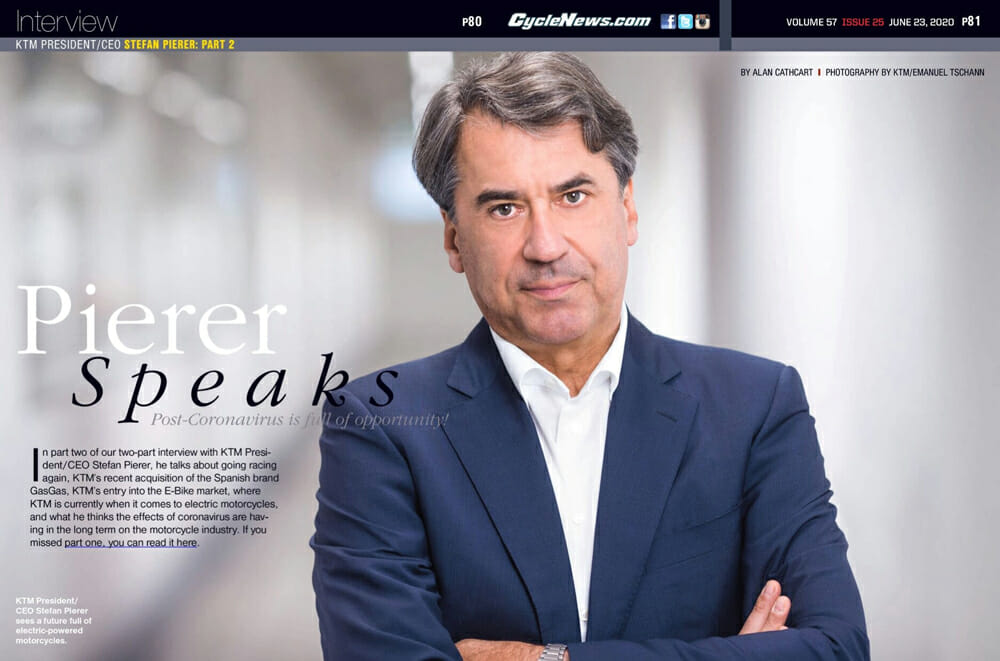Alan Cathcart | June 27, 2020
In part two of our two-part interview with KTM President/CEO Stefan Pierer, he talks about going racing again, KTM’s recent acquisition of the Spanish brand GasGas, KTM’s entry into the e-bike market, where KTM is currently when it comes to electric motorcycles, and what he thinks the effects of coronavirus is having in the long term on the motorcycle industry.
If you missed part one, you can read KTM President/CEO Stefan Pierer Interview: Part 1 HERE.
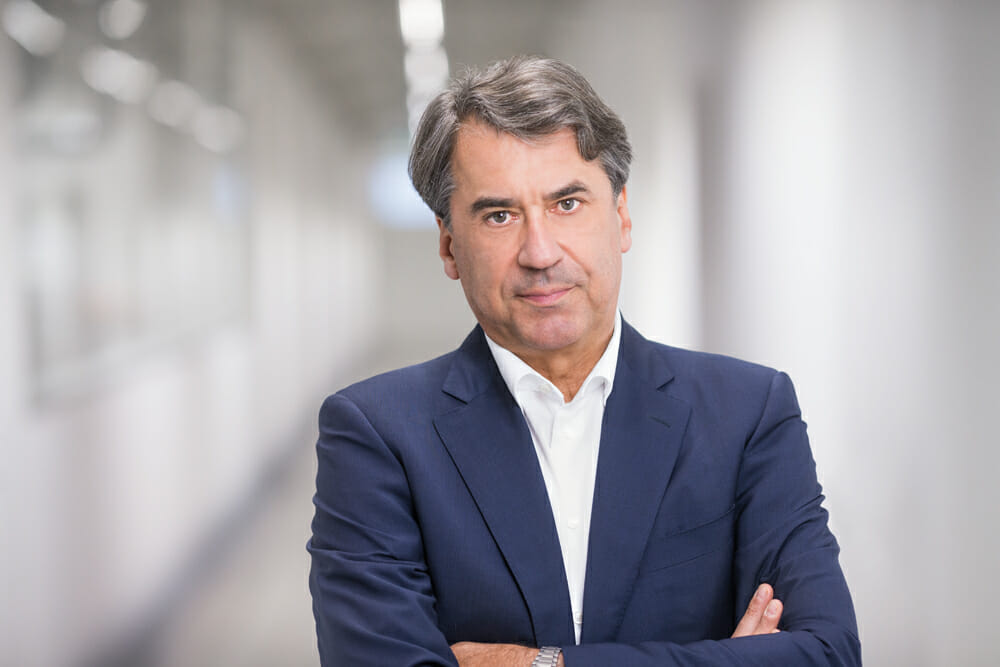 KTM President/CEO Stefan Pierer sees a future full of electric-powered motorcycles.
KTM President/CEO Stefan Pierer sees a future full of electric-powered motorcycles.
Photography by KTM/Emanuel Tschann
KTM is “ready to race,” but most racing activities, especially ones involving International travel have been canceled or delayed. What impact has the pandemic had on KTM’s racing operation?
There are two impacts, a positive and a negative. The negative one is we can’t go racing and, as you say, that’s what we love to do! On the positive side, if you don’t go racing, you don’t spend money for materials, for traveling, everything, you can immediately save a lot of money, and stay home to stay alive. But MotoGP looks like it starts again at the end of July, probably in Jerez with two races, and then via the Czech Republic to Austria, although let’s see how many spectators we’re allowed to have at these events. But it looks good, and I’m sure we’ll have exciting races—for sure everybody is eagerly waiting to get back on track. I think the whole community and all the manufacturers support the decisions that Dorna has taken. They have frozen technology for one and a half years, so we can use all the material that we have in stock for next season, as well. It was a big help that Dorna made such an intelligent decision, so I think MotoGP will come back stronger than before.
How about off-road?
Off-road is obviously our field of expertise, where we have a big extra challenge because we’re now running with a third brand. That is for sure a help, because we have so many very competitive riders, and we could already hold a sort of world champion race with Husqvarna and KTM and GasGas only (laughs)! But it looks like world motocross starts again in Russia on August 2, and like everyone else we just can’t wait.
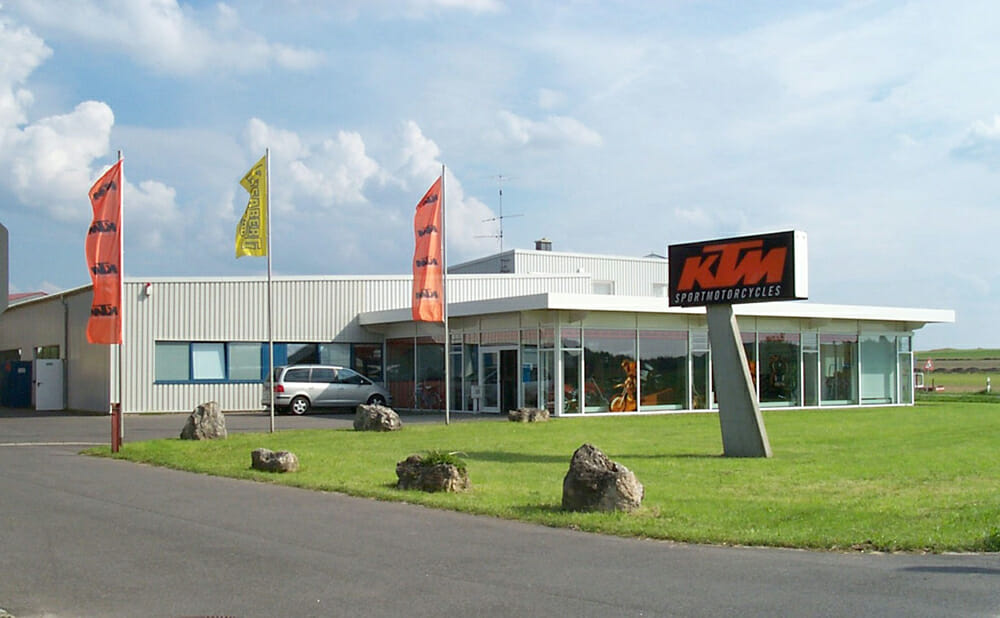 KTM has no plans of slowing down, coronavirus or not.
KTM has no plans of slowing down, coronavirus or not.
And Supercross in the USA restarted, too.
Yes, in Salt Lake City after missing seven races, and Cooper Webb won for KTM on his 450 SX-F! So everybody here is really very happy to see racing not only start again, but KTM starting where it left off, on top of the podium!
Okay, but sorry to mention it, this year Honda beat you in the Dakar Rally for the first time in very many years! What’s KTM’s response to that?
I think there’s a positive and a negative side to this, but after 18 wins, we think it’s very important that another brand to be winning, because it’s increasing the attraction of the race. So, I think, yes, that’s racing, you take it on the chin and start working extra hard to try to win next time! Okay, second place is second place, it’s still a podium, but to win again would also be very nice! We’ll be trying our hardest to make that happen next January.
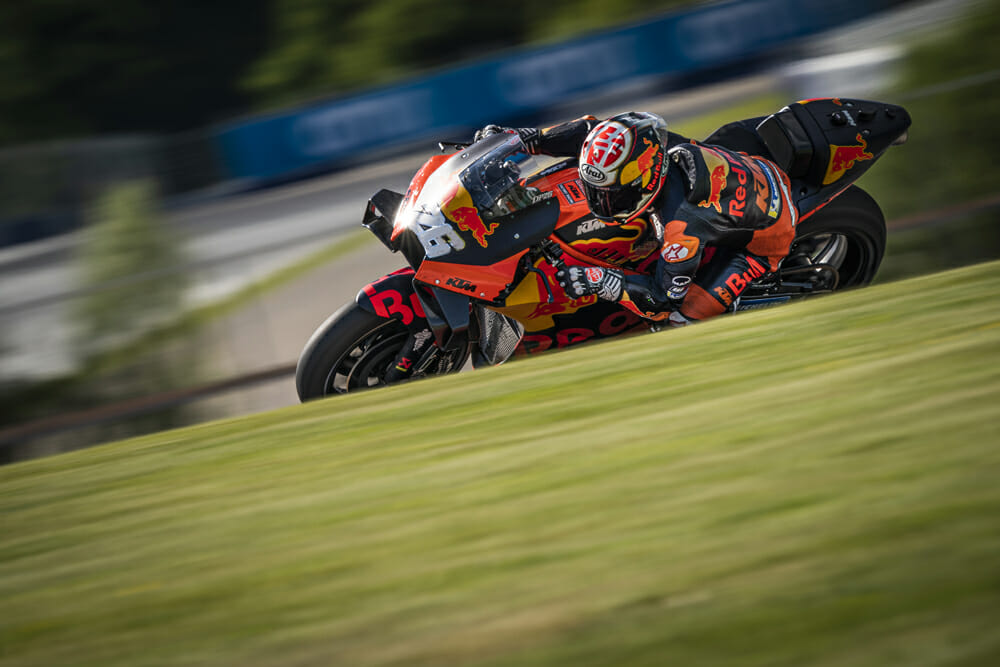 Once MotoGP comes back, Pierer predicts that it will be stronger than ever. Photo: Philip Platzer
Once MotoGP comes back, Pierer predicts that it will be stronger than ever. Photo: Philip Platzer
Laia Sanz had a very good race with the GasGas, so will there be a larger GasGas team in next year’s Dakar?
For a woman to do so well in such a tough race and be beating so many men is a great story for us. This was a very good marketing launch for GasGas under KTM direction and, for sure, two riders will race for GasGas in 2021.
How is your integration of GasGas into the KTM Group proceeding, and what are your plans for new GasGas products?
Basically, we are repeating the successful Husqvarna strategy, but only with off-road products, so that means a GasGas version will be available of the enduro and motocross applications of all the KTM engine platforms. These GasGas versions will start production in September this year, and the first enduro models will be Euro 5 compliant. The GasGas trials bike is already in the program, and we are selling quite nicely around the globe, from the USA to Europe. I’m very happy that we could finally get the last missing link in our off-road product line!
Are you only selling gasoline-powered GasGas trials bikes at present, and will electric models come in the future?
Currently it’s just combustion, but as you know, we are one of the pioneers in electric PTWs [powered two-wheeled], so for sure, the trial bike is very well suited to electric powertrain. We already have the TXE under development.
How about GasGas on-road models?
It’s not yet planned, so right now it stays as an off-road brand.
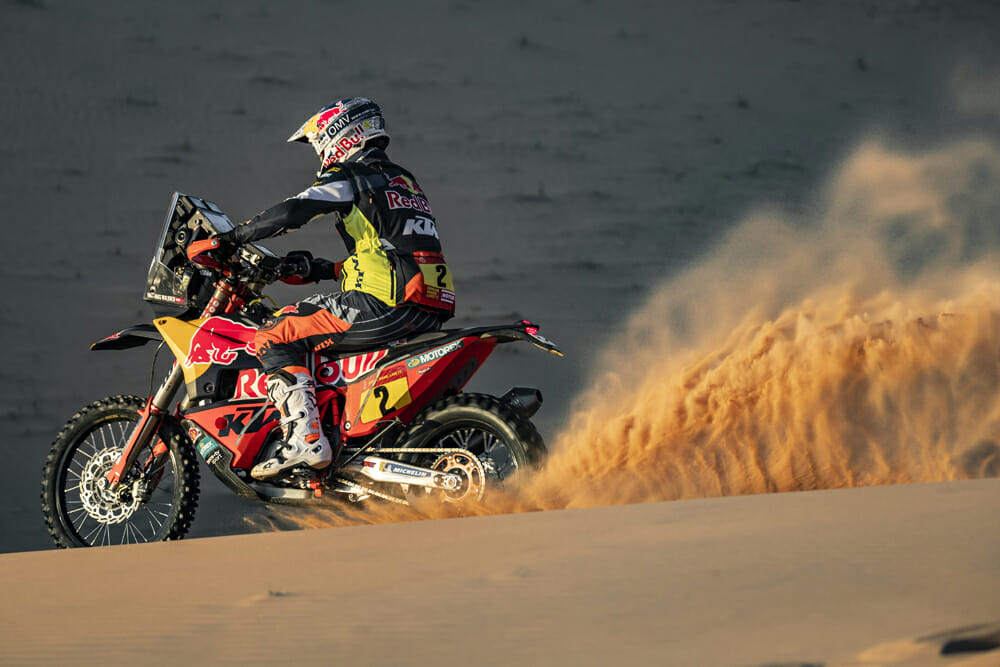 There is at least one downer for KTM—its 18-race win streak at the Dakar Rally came to an end this year. Unfortunately for the other teams, this makes KTM want to win it even more next year. Photo: Rally Zone
There is at least one downer for KTM—its 18-race win streak at the Dakar Rally came to an end this year. Unfortunately for the other teams, this makes KTM want to win it even more next year. Photo: Rally Zone
Looking at urban mobility, when we last spoke almost a year ago, together with your Bajaj partners you had already identified the major growth potential in the electric PTW market for something other than the high-voltage, high-kilowatt models that companies like Harley-Davidson and Zero have been focusing on. So how is your program with Bajaj for your electric model range looking?
Fortunately, we had finished the powertrain development before the arrival of corona[virus], so it’s ready for production with the different brands on different engine platforms, from 4kW up to 10kW. We have two types of powertrains, air-cooled and water-cooled, one you can use for mopeds and suchlike, the other for small motorcycles and scooters, up to the A1 license class.
When will the rollout of KTM’s new E-products come, since you’ve announced you’re not going to be present at the Intermot or EICMA Shows?
In general, trade shows are key business milestones for the entire motorcycle industry, but given the ongoing corona[virus] situation, the public’s health and the welfare of our staff drove our decision not to participate in such shows this year. These indoor events see hundreds of thousands of visitors gathering in enclosed spaces for a long period of time, so in the current environment, even with proper planning, such events are still risky. So, with our new E-products, you will already see them in the next couple of months. I already have the Chetak electric scooter from Bajaj, that’s the first one, and based on that platform, very shortly we’ll see the first E-products of the Husqvarna brand.
If Husqvarna is going electric as well, how about GasGas?
All three brands will have electric models based on their target brand audience, so we’re using GasGas in the future as a brand of E-mountain bikes, but basically for distribution in the motorcycle sector.
Before you established the joint venture last year, GasGas was already commercially linked with Torrot, which is a Spanish electric bike manufacturer. Is Torrot part of the KTM joint venture?
No, it’s not, but the Torrot company is handling the assembly of our E-trail bikes in its Girona factory, so we provide the material, and they produce the finished model, and we pay them a fee for doing that.
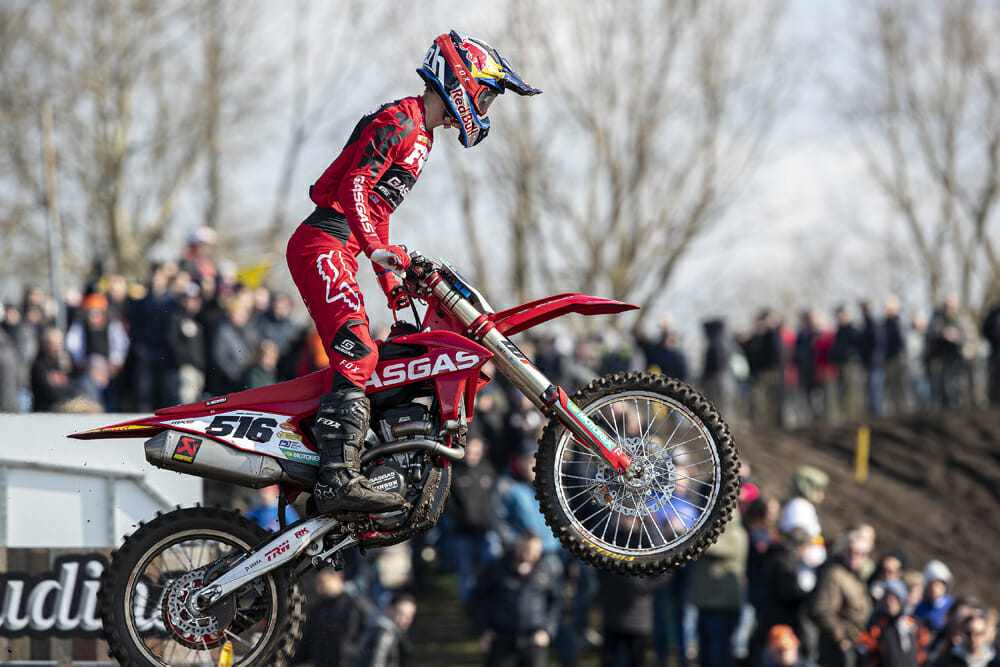 KTM recently acquired the Spanish-brand GasGas. KTM hopes to resurrect the name like it did with Husqvarna.
KTM recently acquired the Spanish-brand GasGas. KTM hopes to resurrect the name like it did with Husqvarna.
You launched the SX-E5 and the Husqvarna E-E5 this year as electric entry-level off-road models for kids. Have the early sales for these met your expectations?
Yes, they have indeed. But I think what we have to do is to push more for electro-mobility to take root in the small PTW displacements. So there’s already a huge market in Europe for the electric bicycle, but now we need to expand this for kids bikes, and bikes for sports and leisure use. I think for sure off-road will become predominately electric in the future, doesn’t matter if it’s trials or motocross, it’ll happen. And for sure, we’ll see the same thing within two or three years in the moped or the scooter category. I see a very positive future for electric products.
Is that why you acquired Pexco, your former German strategic partner in E-bicycles, as a wholly owned subsidiary of Pierer Mobility? You’ve gone into the electric bicycle market very strongly.
Yes, and fortunately we did it earlier than we originally planned. By the end of December, we integrated Pexco into the whole operation of the Pierer Mobility group, and we were 100% operational by February. I’ve established Husqvarna E-Mobility as a wholly owned subsidiary into which I folded Pexco, and this year we are selling more than 60,000 units already in central European countries, so Germany, Switzerland and Austria. But for the model year of 2021 onwards, we’ll go to the whole of Europe under the Husqvarna E-Bicycles and R Raymon brands. We are additionally using our distribution network on the motorcycle network for these, because the E-mountain bike and the E-bicycle are perceived as a powered two-wheeler, and it’s becoming a very important product also for the motorcycle dealer who is used to providing service, warranty and assistance with the battery pack. I think it’s a big advantage for the dealers to have this line as well as the combustion-engined motorcycles.
What sort of price point are we talking about?
It’s starting at around 3000 euro (approximately $3400), and goes up to about 7-8000 euro ($7900-$9000). And it’s like a small-displacement motorcycle, it’s a serious powered two-wheeler.
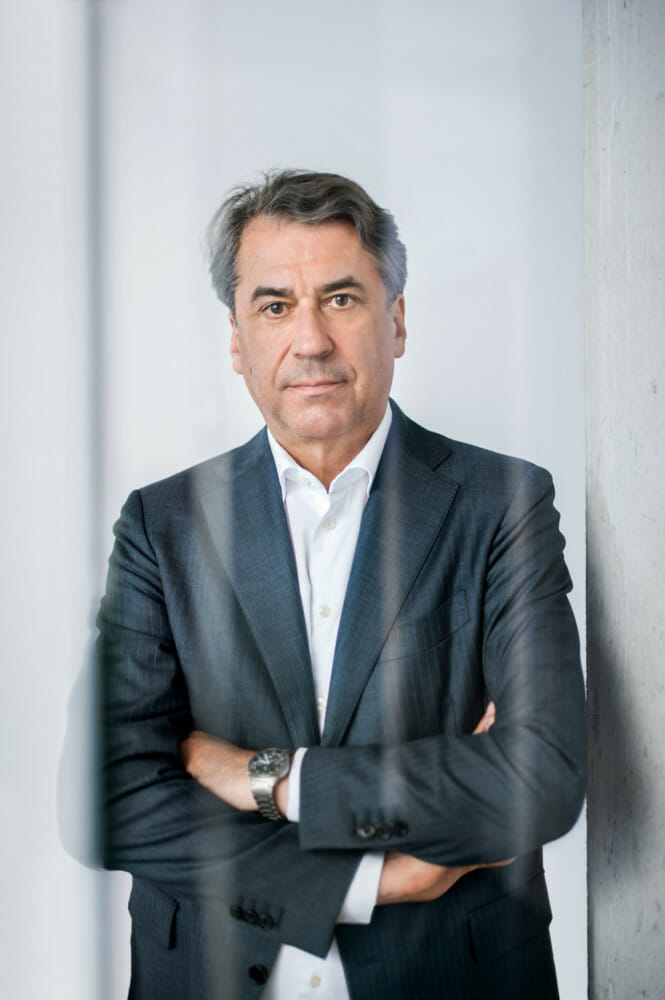 Yes, when Stefan Pierer talks, people listen.
Yes, when Stefan Pierer talks, people listen.
Finally, let me ask you about your strategic partner Bajaj’s joint venture with Triumph. TVS is one of its major rivals in India and is a strategic partner with what you always call your friendly rivals up the road, BMW. TVS has just acquired Norton, and it seems that Bajaj and Triumph have now reached some form of a closer agreement. How do you feel about that as far as KTM is concerned?
Rajiv Bajaj always closely discussed the Triumph agreement with me, though it’s not such an issue for KTM because we don’t have any heritage brands. Triumph is a very well-known heritage brand, and I think that Bajaj strengthens its production capability, while also bringing some benefits with the supplier chain, so maybe it could bring us a little bit closer. Anyway, we’re talking to each other. But it took a long time, three years to set it up, and that’s not the speed we’re used to as a race brand! I think the TVS purchase of Norton, in my opinion, is not necessarily a good decision: It reminds me a little of Mahindra’s acquisition of BSA. I think that after corona[virus], some consolidation in the industry will take place, and, to start a new brand, which is effectively what TVS must do with Norton, it’s not going to be easy.
What do you see the effects of coronavirus as having in the long term on the motorcycle industry?
As I said already, smaller- and mid-sized displacements are already becoming very important, because powered two-wheelers have become a key transportation item of urban mobility, and a very strong impact is coming from electro-mobility with low-voltage products up to 12kW. I think that’s the driving force for the future. On the larger-capacity segments, for sure the premium brands with very special products, they will survive, but for the newcomer, there’s no place anymore. So that’s my opinion. And consolidation will surely occur, so that we have the Japanese as our competitors, but nobody else is a competitor. Even Harley is in a niche segment of the marketplace, like Ducati and Triumph, so if instead of fighting each other, they all talk a little bit more to each other, about the supply chain or this or that, it could empower everybody. I started 30 years ago with 6000 units annually and now we have 300,000, but, except for BMW, my European colleagues still produce the same kind of quantity as they did back then. We are aiming to take sales from the Japanese, nobody else, and that’s what I like to do—to go racing against the Japanese! CN
